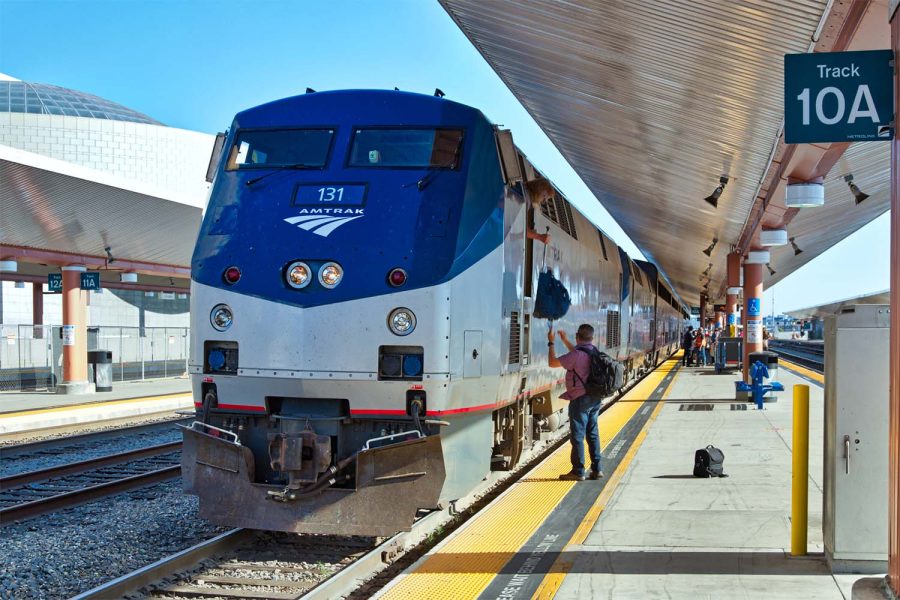Opinion | Why Iowa City needs Amtrak
An Amtrak line running through Iowa City will bring necessary economic and climate benefits to the area.
November 7, 2022
The Iowa City City Council recently agreed to purchase three properties near the city’s railyard to provide space for a proposed Amtrak route — the country’s largest passenger rail operator — from Iowa City to Chicago.
A successful partnership with Amtrak will bring monetary and climate benefits to our community and open congested highway lanes to Chicago.
Riding the train is not part of Iowa City residents’ lives, as we are reliant on cars to take us to other states and cities. This has led to problems of congestion, as there are thousands of cars on the interstates around Iowa City every single day.
The two roads that Iowa City residents must take to Chicago are interstates 80 and 88. This has led to congestion, as they are two of the most crowded roads in the Midwest. On any given day on I-88, there are around 250,000 motorists, according to a 2019 report by the Illinois Tollway. On I-80, that number stands at around 36,000. This means that by the end of the year, 104 million vehicles have been on those two roads.
It was estimated pollution from these vehicles contextualizes how bad car travel is for our society. With the average passenger mobile emitting 4.6 metric cubic tons of CO2 a year, it becomes clear that car travel is not the most environmentally friendly form of transportation, according to the Environmental Protection Agency.
In contrast, trains are much more environmentally friendly because their carbon footprint is significantly lower than passenger vehicles.
When analyzing the intensity of carbon footprint per vehicle, which takes into account preferred methods of transportation in a society, it was found that a train’s carbon footprint is 4.10 tons of oil equivalent per million of passengers, according to the International Energy Association. Meanwhile, cars have a carbon footprint of 42.96 tons of oil equivalent per million — 10 times the carbon footprint of trains.
In terms of economic benefits, an Amtrak line would bring hundreds, possibly thousands of jobs to Johnson County. It was estimated that for every $1 billion invested into the construction of an Amtrak line, 24,000 jobs would be created. This means that there would be an increase in economic activity from the section of the rail that would be built in Iowa City, according to the American Public Transportation Association.
Another benefit that would help bolster the Iowa City economy is that the rail line will connect Iowa City to Chicago, thus granting easier access to markets for residents of both cities.
The route would also connect to the Quad Cities and allow Iowans to have access to travel to each other in terms of economic relations. It was estimated by the American Public Transportation Association that for every $1 invested into a rail line, $4 are generated back into the local economy.
Connections to larger markets facilitate economic growth that connects Iowa City businesses to Chicago markets with only a quick train ride.
Encouraging Amtrak to come to Iowa City could potentially bring millions of dollars to the Iowa City market while also lowering average emissions for Iowa City residents.
The relatively cheap prices of rail travel also make it affordable to reach a destination without having to deal with the highway congestion we see today.
We as a community should support the City Council’s continued effort to bring Amtrak to Iowa City.
Columns reflect the opinions of the authors and are not necessarily those of the Editorial Board, The Daily Iowan, or other organizations in which the author may be involved.



